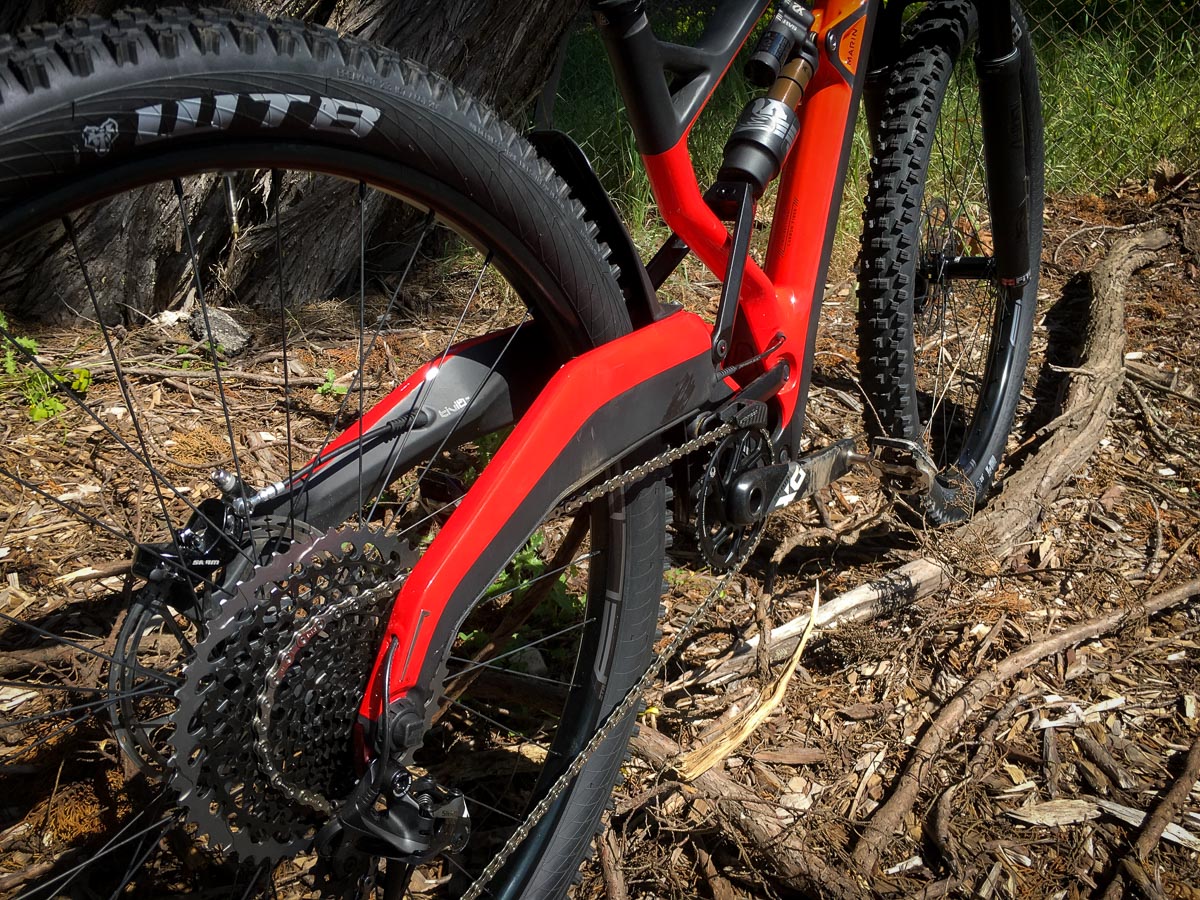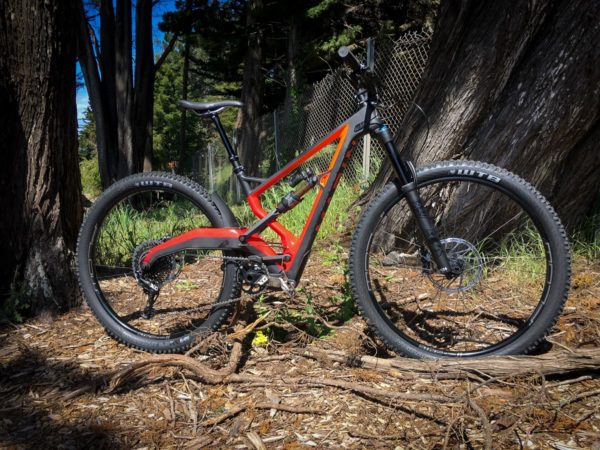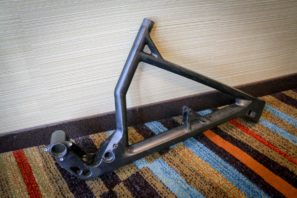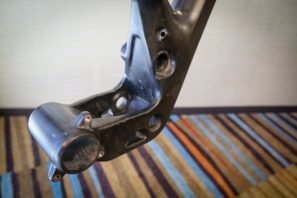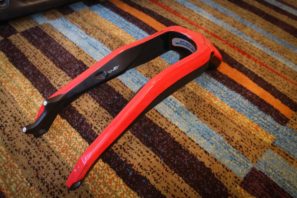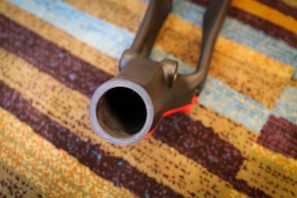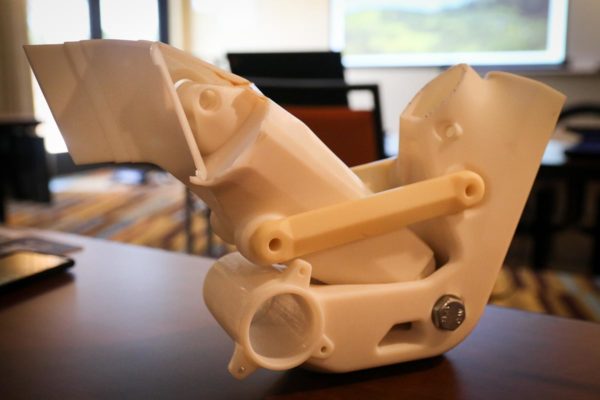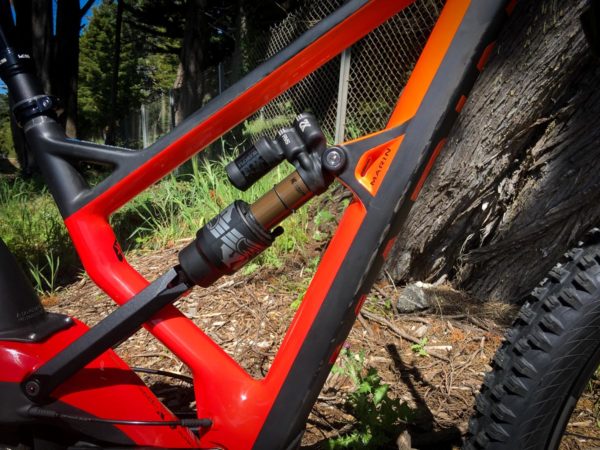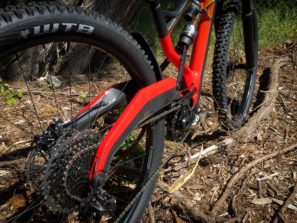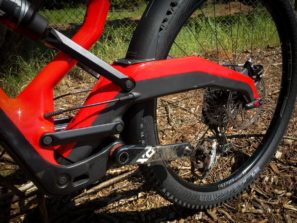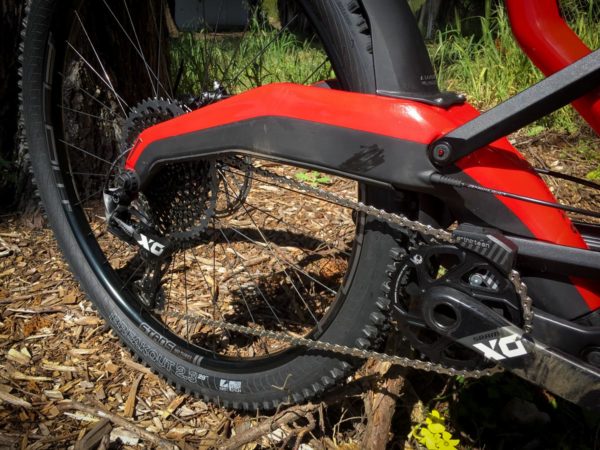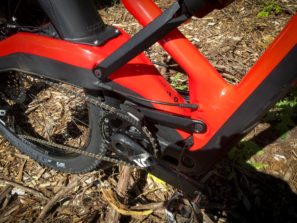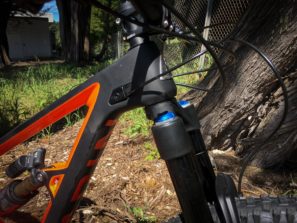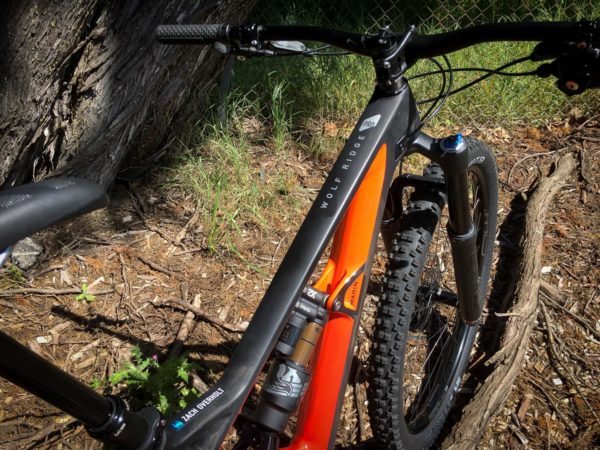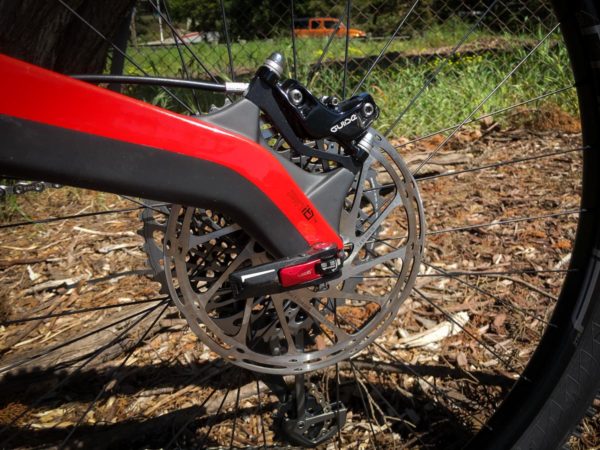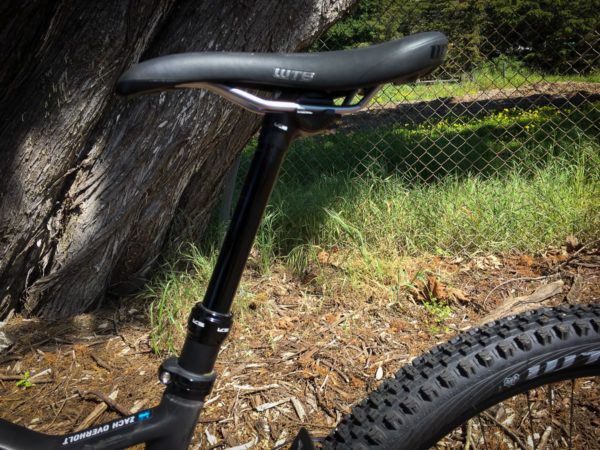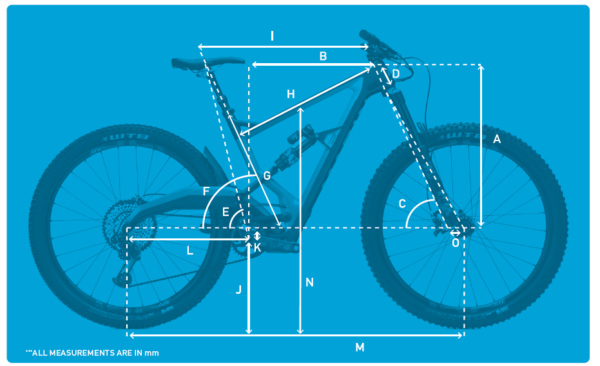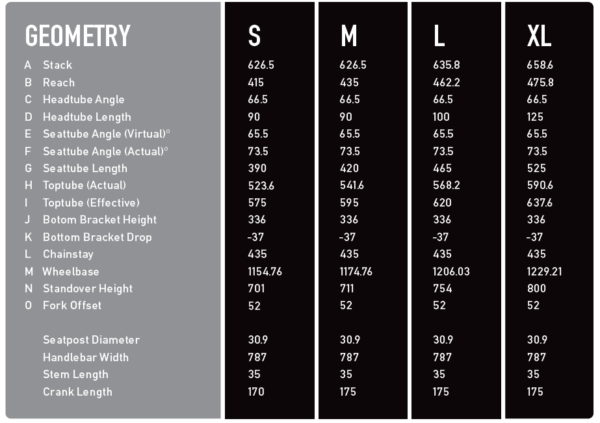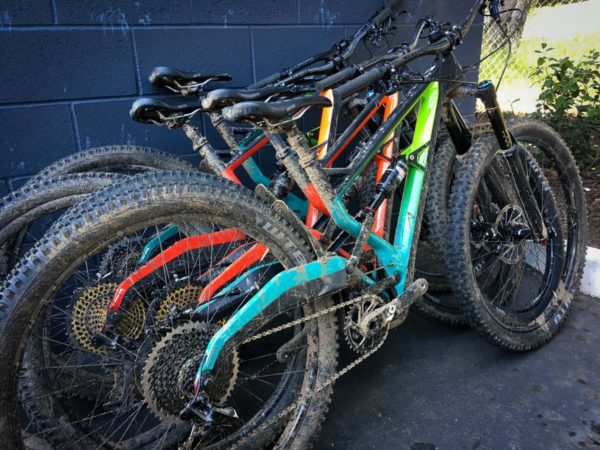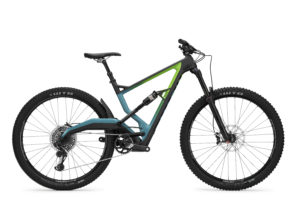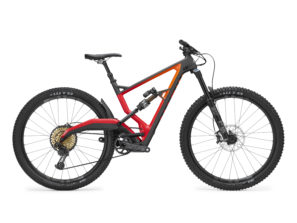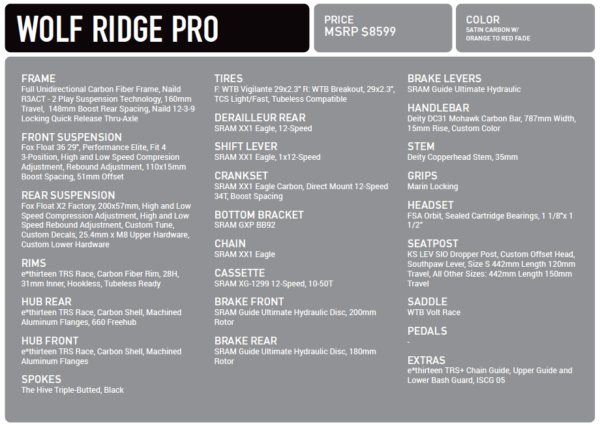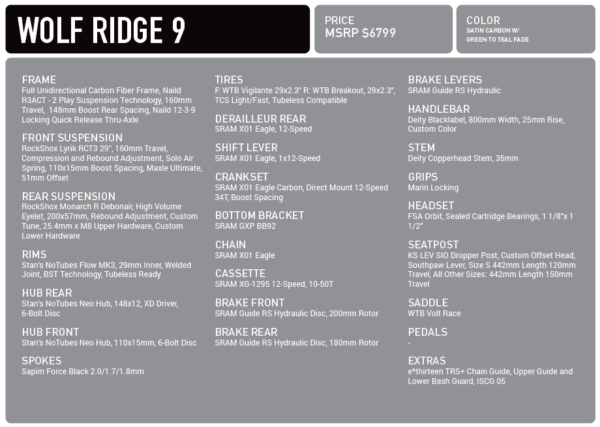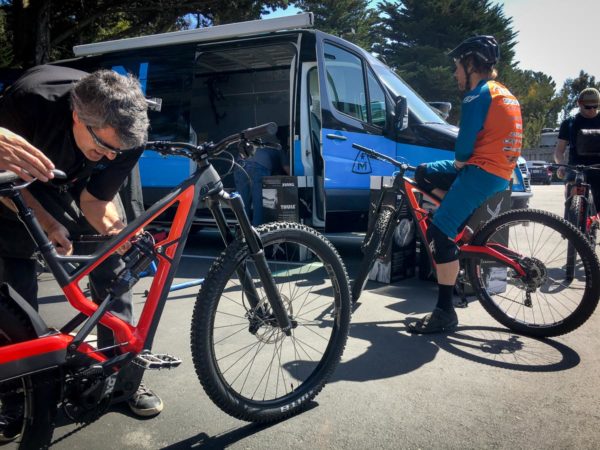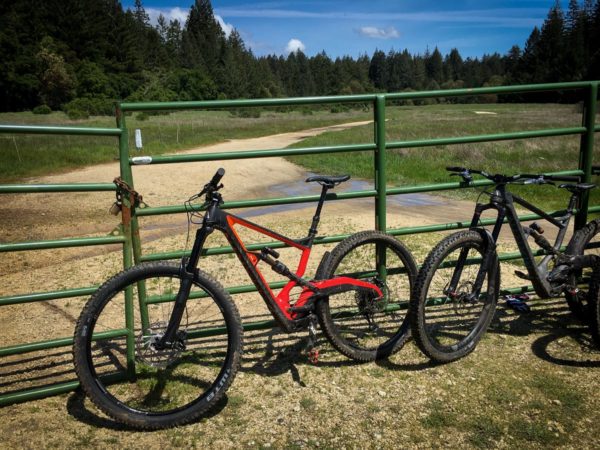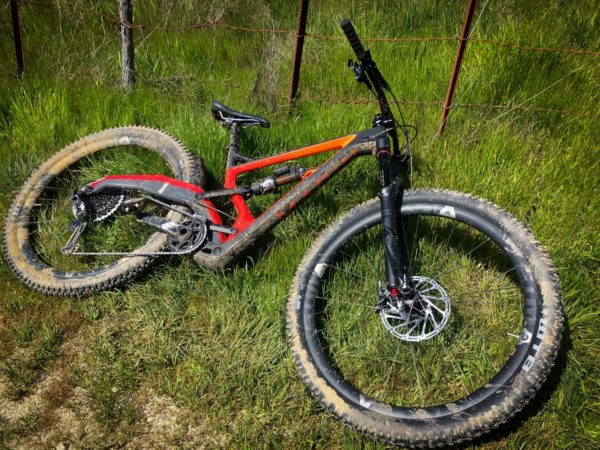It wasn’t long after hearing that Marin had a new bike to show before Sea Otter that the wheels started turning. We were told little other than it was a pretty exciting bike, and a big step forward for the brand in terms of mountain bike performance. Just coming off the Polygon press launch in Oregon, and knowing that Marin has worked with Naild for projects in the past, we had a sneaking suspicion about what we might see.
Walking into dinner and seeing Darrell Voss sitting at the table pretty much confirmed it. Marin’s newest bike would be the second in as many weeks to launch with the Naild R3act 2Play suspension system. Based on our time with the Polygon Square 1 in Oregon, this would probably be a good thing, but we couldn’t wait to find out…
Dating back to 1986, Marin has been around since the days of having a single bike to truly do it all. There weren’t any category specific bikes, and you’d often race XC, DH, and maybe compete in a trials competition in the same weekend on the same bike. Obviously, much has changed since those days. Now there’s a category for nearly everything with diversification making bikes better than ever for a particular segment of riding, but also flooding the market with options and making it harder for your average rider to choose a bike. In Marin’s terms, mountain biking is heading towards “nichification.”
Much like Polygon, Marin and Naild share a common vision of improving the MTB experience through improved technology that makes the ride better, while also cutting down on the number of bikes a rider may feel the need to own. If you can pedal a longer travel bike up, why not make the most of the travel on the way down?
While the R3act-2Play suspension system is the same basic concept as that from the Polygon, the Marin has a different swingarm designed for 29″ wheels along with different pivots, links, and a different design goal and intent. Calling it a partnership, rather than a licensing, both Marin and Darrell Voss’s Naild worked closely together to create their own vision of a paradigm shift in mountain biking. With travel no longer able to accurately define the category, Marin says that the Wolf Ridge is capable of allowing any rider on any terrain to have a better ride – big claims for sure.
Fortunately for Marin, we’ve seen first hand that the R3act-2Play suspension system seems to deliver on its promises. This time though, instead of a 180mm trail destroying 27.5″ wheeled monster, the Wolf Ridge is built around a 160mm travel 29er. Combining their own Marin geometry theory and biometric fit and kinematics, Marin worked with Naild to ensure that the fit would keep a consistent center of gravity for all riders of all sizes for more consistent suspension performance.
Along the same lines of the Polygon, the thought behind the Naild R3act-2Play system is that modern suspension system over use hydraulic damping to make up for poor kinematic design. Darrell still played coy on discussing kinematics too deeply stating, “I’m not going to talk about kinematics in detail. It’s not that I can’t or I won’t, but it takes away from the final message.” He did however, talk again about the concept that this is more of a ground tracing device than suspension system. Admitting that this is quite a different methodology to suspension design, it was described as the constant load on the chain holding the frame up – or on a plane. However, the suspension is free to move whenever it encounters a bump (even when pedaling) since the main link is always in compression. That ‘on plane’ concept also keeps the geometry constant when climbing or descending, and allows for a lower bottom bracket.
Darrell didn’t shy away from the topic of chain growth either. Stating that you actually need a small amount of chain growth over a small range for the suspension to work properly, he said it’s when you have too much chain growth over a small range that you experience feedback through the pedals.
The last thing Darrel seemed to really want hit home was the concept of equipoise, or that the tension between the BB and the dropout is acting against the inertia of the rider which wants to move backwards under acceleration. This is what helps smooth out the suspension for a ‘lumpy’ power output like that of a human.
All of this boils down to building a long travel bike that pedals like a short travel bike and seamlessly transitions without any levers or special shocks. In that regard, the Wolf Ridge is similar to the Polygon in that the suspension uses about 60% less damping than a standard bike. Note that this does not mean it has no damping at all, just less than that of another bike since it’s not relying on the damping more than the kinematic.
About five years in the making, much of the Marin Wolf Ridge looks familiar if you’ve seen the Polygon Square 1. The elevated stay swingarm is impossible to miss with a built in fender a requirement for use. The massive swingarm houses a 43mm slider with a built in pressure relief valve in the pivot. Built as a four bar suspension system, the bikes are equipped with a Fox Float X2 or a Rock Shox Monarch Debonair rear shock which is run fairly open. Cable routing is internal through the head tube, poking out above the bottom bracket with tidy guides sending it back into the swingarm. Underneath, a PF86 bottom bracket is tucked under the swingarm with ISCG 05 tabs for good measure.
As an early adopter of the Naild thru axle system, the Wolf Ridge also uses the 12-3-9 system for a 148 x 12 rear end.
Again, we find a custom KS dropper post with an 18mm set back to accommodate for rear wheel clearance at full bottom out.
Offered in four sizes, I was on the medium for the launch ride which I found to fit very well for a long travel 29er at my height (5’8″). I did wish I have a few more millimeters of room to drop the 150mm seat post since it’s currently bottoming out in the seat tube, but Marin said they would be working on that for production.
To be sold in two different builds, the Pro and the 9 are both pretty awesome specs with SRAM Eagle. Claimed weight is under 30lbs without pedals and set up tubeless for a large Pro model. I weighed a non-production sample at the launch and it came in at 30.73lbs, though it didn’t have the proper build.
Wolf Ridge Pro
- SRAM XX-1 Eagle drivetrain
- Fox 36 Performance Elite & Float X2 suspension
- E*thirteen TRS Race Carbon wheelset
- US MSRP $8599
Wolf Ridge 9
- SRAM X0-1 Eagle drivetrain
- RockShox Lyric RCT3 & Monarch Debonair R suspension
- Stan’s NoTubes Flow MK3 wheelset
- US MSRP $6799
First Impressions
My time on the Wolf Ridge was very short but it still provided a window into the Wolf Ridge’s psyche. Unlike the Polygon launch, this time the attending journalists were run through a presentation before hand. To be honest, I liked the other format where we just jumped on the bikes and rode – letting us form our own opinions before we were fed the information about what we should be feeling. But Sea Otter is an incredibly busy place and the first ride was still pretty eye opening.
I really like the Polygon a lot, but without living somewhere that I have access to incredibly gnarly trails I’m not sure I’d want to pedal around a 180mm travel bike – even though you totally could. The Wolf Ridge on the other hand – this is the R3act-2Play system in the size that’s just right. After a tiring ride the day before, I fully expected to be gassed on today’s ride with the Wolf Ridge, but the bike climbed so well that I felt like I was more energized at the top for the downhills. Remaining incredibly composed on some techy wet roots and jumps, the bike left a huge smile on my face at the end of the ride.
Compared to the Polygon, the suspension didn’t feel quite as supple over the terrain, though that could be suspension tune or just the difference between 160 and 180mm of travel. On the flip side though, the Wolf Ridge seemed to be more poppy off lips and was easier to wheelie and play around on.
Even though my time on the Wolf Ridge was brief, this is a bike I can’t wait to get more time on. As I said earlier today, this is the most excited I’ve been about a new Marin in a long time, and can’t wait to see what it’s like in the long haul.
